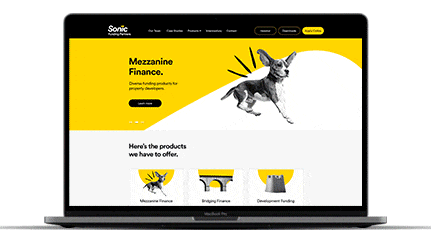Responsive Website Design Services to Enhance Your Business
Responsive Website Design Services to Enhance Your Business
Blog Article
Top Tips for Creating an Impactful Site Layout That Transforms
To attain this, one should consider a variety of variables, consisting of comprehending the target audience, prioritizing individual experience, and optimizing for mobile systems. The calculated use of compelling call-to-actions and a distinct aesthetic pecking order plays an essential role in leading users via their journey.

Understand Your Target Target Market
Recognizing your target market is fundamental to effective site layout, as it lays the groundwork for creating an appealing customer experience. Determining that your individuals are, including their demographics, choices, and behaviors, enables designers to tailor the site's content, layout, and capability to fulfill particular needs.
Conducting thorough market study is crucial in this process. Studies, meetings, and analytics can give useful insights right into individual assumptions and pain points. By assembling this information, developers can produce user personalities that represent different segments of the audience, making certain that layout choices are notified and relevant.
Moreover, comprehending the target audience helps in picking ideal layout aspects such as color pattern, typography, and images that resonate with individuals. A site that talks straight to its audience fosters a sense of connection and trust, motivating longer visits and higher conversion prices.
Inevitably, a user-centered method to site style not only improves user satisfaction however also sustains business objectives by driving involvement and commitment. By prioritizing the requirements and preferences of the target market, a website can successfully serve its objective and attain preferred outcomes.
Prioritize User Experience
To boost the general effectiveness of a site, prioritizing user experience (UX) is necessary (Website Design). A well-designed UX ensures that visitors can browse the site effortlessly, discover details swiftly, and engage with material meaningfully. This causes enhanced individual contentment and higher conversion prices
Begin by implementing intuitive navigating. Menus ought to be realistically structured, permitting users to find vital areas of the site with minimal effort. Consistency in layout elements, such as color plans and fonts, cultivates knowledge, which is essential for preserving individual interaction.
In addition, consider the packing speed of your web site. A hold-up of simply a few seconds can cause significant drop-offs, as users are less likely to wait for a slow-loading page. Improving images and optimizing code can improve performance and preserve visitors.
By focusing on customer experience, you not just create an extra satisfying setting for visitors however additionally strengthen your brand's integrity. Eventually, an emphasis on UX is an investment in the lasting success of your web site.
Enhance for Mobile Devices
Optimizing for mobile phones is important in today's digital landscape, where an increasing number of customers accessibility web sites via smart devices and tablets. A mobile-friendly design not just improves customer experience yet additionally plays a significant function in improving internet search engine positions. To attain this, it is necessary to take on a receptive style that automatically readjusts to different screen sizes and positionings.

Loading rate is an additional important variable; mobile users are typically less Learn More patient and anticipate rapid access to information. Maximize pictures and take advantage of internet browser caching to enhance performance. Lastly, examination your internet site on multiple devices and display resolutions to recognize and remedy any kind of prospective usability problems. By prioritizing mobile optimization, you make certain that your site continues to be competitive and successfully engages a wider target market.
Usage Engaging Call-to-Actions
An internet site's effectiveness typically pivots on its capability to lead site visitors toward wanted activities, making compelling call-to-actions (CTAs) vital elements of design. CTAs serve as the essential points that direct users to involve with the website, whether that indicates making an acquisition, enrolling in an e-newsletter, or downloading a source.
To develop efficient CTAs, clarity is critical. Use concise language that clearly connects the action you want the user to take. Expressions such as "Get Started," "Register Free," or "Shop Now" not only communicate urgency but also get rid of obscurity. The placement of CTAs is similarly crucial; they should be purposefully placed throughout the web page to ensure they are easily visible, especially in high-traffic locations.
Additionally, the design of CTAs need to stand apart without being obtrusive. Utilize contrasting shades and clear fonts to ensure they catch attention. Additionally, consider utilizing directional cues, such as arrows or images, to lead individuals towards these switches. By focusing on these aspects, businesses can dramatically improve individual engagement, driving conversions and inevitably achieving their web site's goals.
Concentrate On Visual Power Structure
Efficient website layout depends greatly on a well-structured visual pecking order that guides customers via content flawlessly. By arranging components in a manner that focuses on information, developers can improve individual experience and promote decision-making. This involves making use of size, color, comparison, and spacing purposefully to draw focus to one of the most essential elements of a website.
Making use of bigger typefaces for headings and subheadings establishes a clear difference in between different areas, allowing users to scan content effortlessly. In addition, using contrasting colors for switches and calls-to-action can catch individual attention and encourage communication. Whitespace is an additional important component; it prevents clutter and makes it possible for individuals to concentrate on key messages without diversions.
Pictures and graphics ought to enhance the message while also sticking to the established power structure, strengthening the overall have a peek at this site message (Website Design). Consistency in style elements, such as color design and typography, more enhances the visual power structure, making navigating user-friendly

Conclusion
In conclusion, efficient website style requires a comprehensive understanding of the target audience, prioritization of customer experience, and mobile optimization. Inevitably, a well-executed website layout serves as an essential element in driving individual actions and attaining service goals.
Report this page